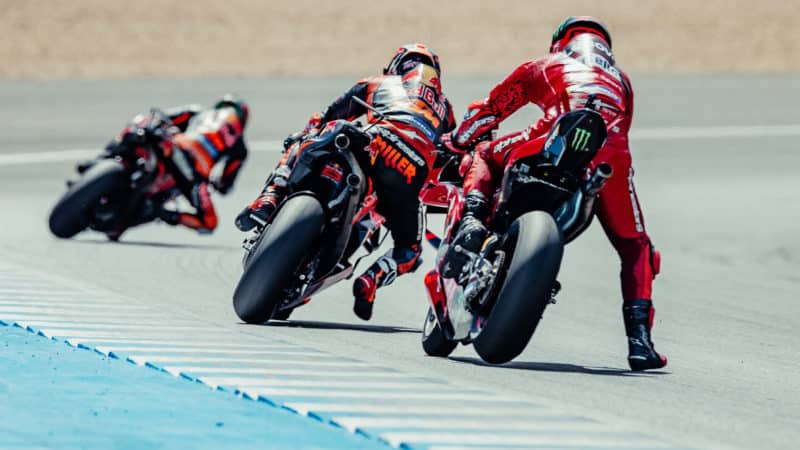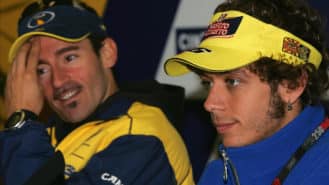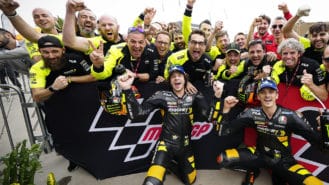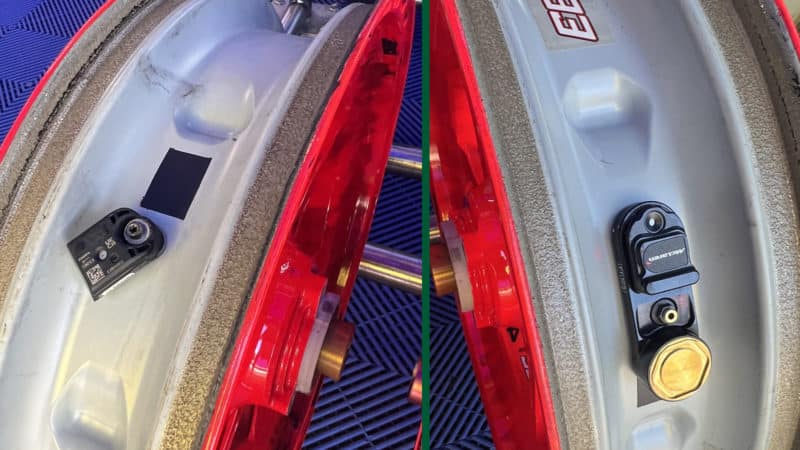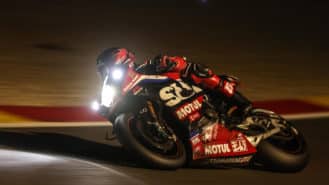And not only that. The latest RC16 has reintroduced something that MotoGP fans have mourned for many years: sideways riding!
Binder and Miller were a joy to watch as they fought for the lead, playing chicken as they attacked the Turn 6 right-hand hairpin, rear tyres kicked out to the left as they desperately tried to scrub off speed and hit the apex.
Both men grew up racing motocross, so they like to ride out of shape. And that’s one reason Miller is loving the RC16 even more than he loved Ducati’s various Desmosedicis, which he raced for five seasons.
“In terms of riding the KTM it brings me back a little bit to my Moto3 days [with KTM],” he said at Jerez. “If I want to slide the bike I can put the bike like that, piece of piss. And if I’m stopping the bike sideways, I can do things with the bike more freely.
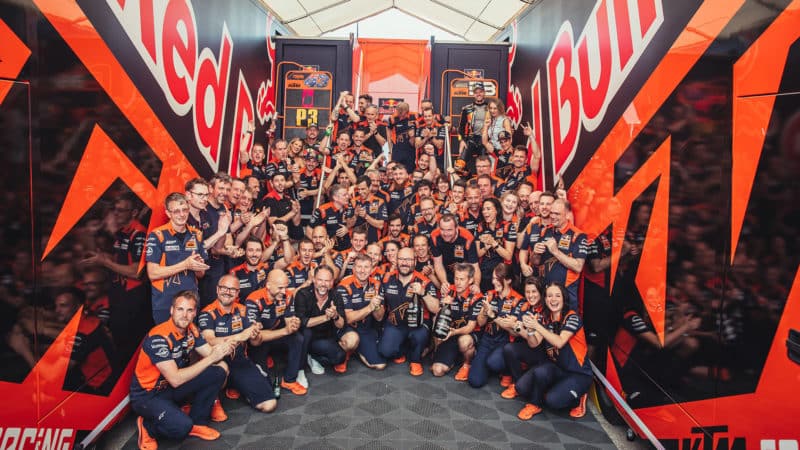
The KTM double-podium celebrations were much messier than this photo makes them look!
KTM
“That just gives you an extra tool to use in that area, whereas with the Ducati – and don’t get me wrong, because the Ducati did everything very well, especially the last model – but it kind of felt like you were on top of the bike and riding the bike, but you weren’t in charge of it all the time..”
Which makes you think of Bagnaia’s fall at COTA, where he crashed out of the lead after losing the front, and Jorge Martin’s frequent offs; four at the last two races. Perhaps that grey area which the rider really, really needs – from the first warning sign of impending doom to the front completely letting go – is getting very narrow on the Ducati. I mean, how often do you see a Ducati rider save a front slide with knee and elbow? Not very often. In other words, you’re on the ground before you know it.
“Sometimes you don’t see the braveness of a rider in the eyes”
Considering all this, Bagnaia’s victory at Jerez was something else. When you’ve crashed out of the last two races, losing the front, you come to the next race with doubts, in yourself, in the machine. You are also terrified of crashing out in the same way again, because then you’re in a downward spiral of confidence, which can be very difficult to reverse.
Bagnaia had a horrible Friday at Jerez – 13th fastest – because he wasn’t getting the feeling he wanted from the front end and the front tyre. Maybe it was the bike, maybe it was him.
“Pecco was obviously pissed about the Friday sessions but he trusted the team and he went to sleep without bad ideas in his mind,” team manager Davide Tardozzi told me after the race, champagne glass in hand. “Finally in the Saturday morning session we found out some things and finally we fixed everything after the sprint race. It was a matter of suspension and ride height, the position of the bike.”
There’s no doubt that Bagnaia’s first victory since the season-opening Portuguese GP was the work of a hero. He could have settled for a podium finish to rebuild his confidence, but he didn’t.
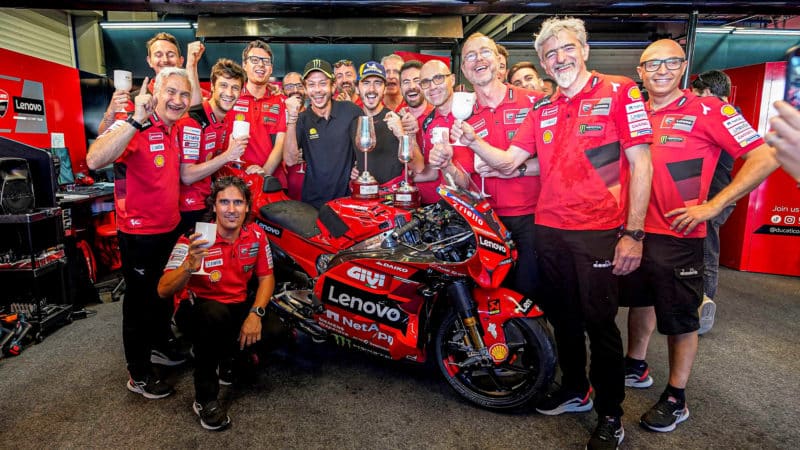
Bagnaia won a brave and important victory in front of all his bosses, including Valentino Rossi
Ducati
On the final lap he risked everything to keep Binder behind him. Binder’s astonishing-late braking into Turn 6 got him to within a few metres of the Ducati’s rear tyre and by Turn 9 he was even closer, trying to build towards an attack at the final Turn 13, where so many Jerez battles have been decided, invariably followed by seething arguments in pitlane and paddock.
Where Bagnaia won the race was the penultimate Turn 12, one of MotoGP’s fastest corners, and with minimal run-off. In other words, very dangerous. But if the hunted wants to beat the hunter at Jerez the only way is to take huge risks at Turn 12, to eke the extra few metres that will make it impossible for someone to find a way past into the final hairpin.
“Sometimes you don’t see the braveness of a rider in the eyes,” says Alex Baumgartel of Kalex, with whom Bagnaia won the 2018 Moto2 world title. “Pecco doesn’t look brave but he is f**king brave!”
